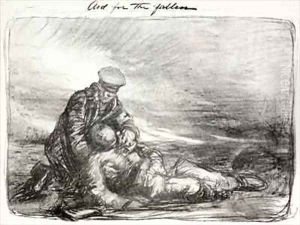Sir Thomas Brock Paintings
Sir Thomas Brock was a prominent English sculptor of the late 19th and early 20th centuries, known for his public monuments and statues, as well as his significant contributions to the New Sculpture movement in Britain. Born on March 1, 1847, in Worcester, England, Brock was apprenticed at the age of 12 to John Henry Foley, a well-known sculptor of the time. Under Foley's guidance, he learned the skills of a sculptor and gained valuable experience in the field.
After Foley's death in 1874, Brock finished several of his mentor's unfinished works, which helped establish his reputation. In 1883, he was commissioned to create a statue of Sir Richard Owen, the biologist, for the Natural History Museum in London, which was well received and further solidified his status as a leading sculptor.
Brock's most famous work is likely the Victoria Memorial in front of Buckingham Palace. This grand, neoclassical monument was completed in 1911 and features a large statue of Queen Victoria surrounded by allegorical figures. It showcases Brock's skill in creating large-scale, complex works that combine both realism and idealism. He was also responsible for the design of the imperial crown on the Queen Victoria effigy on coinage and stamps after her death, which was a symbol of the British Empire during that era.
Throughout his career, Brock received many honors. He was elected an associate of the Royal Academy in 1883, became a full academician in 1891, and was knighted in 1911. His works are characterized by their attention to detail, lifelike representation, and allegorical content. Brock was a significant figure in the transition from the often rigid and formulaic Victorian sculpture to a more relaxed and expressive style that characterized the New Sculpture movement.
Sir Thomas Brock died on August 22, 1922, in London. His legacy includes numerous public monuments that still stand today, which continue to be appreciated for their craftsmanship and historical significance. Brock's approach to sculpture left a lasting imprint on the art world, influencing subsequent generations of British sculptors.
